Acupuncture for Treatment of Myo-Fascial / Facial Pain
What is Acupuncture?
Acupuncture is the stimulation of special points on the body, usually by the insertion of fine needles. Acupuncture points are seen to correspond to physiological and anatomical features such as peripheral nerve junctions and diagnosis is made in purely conventional terms (as opposed to using Traditional Chinese Medicine terms).
An important concept used in Western Acupuncture is that of the “trigger point”.
The Trigger Point (TrP / Myo-fascial TrP / MTrP) is an exquisitely tender spot in a discrete taut band of hardened muscle that produce a local pain and characteristic pattern of referred pain, among other symptoms. The TrP is composed of numerous, so-called, contraction knots. An individual contraction knot appears as a segment of a muscle fibre with extremely contracted sarcomeres and an increased diameter.
TrP’s prevents full lengthening of the muscle, weakens the muscle and mediates a local twitch response of muscle fibres when adequately stimulated. When compressed, the TrP produces referred motor and often autonomic phenomena (such as vasoconstriction, vasodilatation, goose bumps & the raising of hairs), generally in its pain reference zone.
There is general agreement that any kind of muscle overuse or direct trauma to the muscle can lead to the development of TrP’s. The taut band limits stretch of a muscle and produces weakness that is rapidly reversed as the TrP is inactivated.
A typical example of myo-fascial trigger points might be tender areas in the muscles of the neck and shoulder which relate to various patterns of headache.
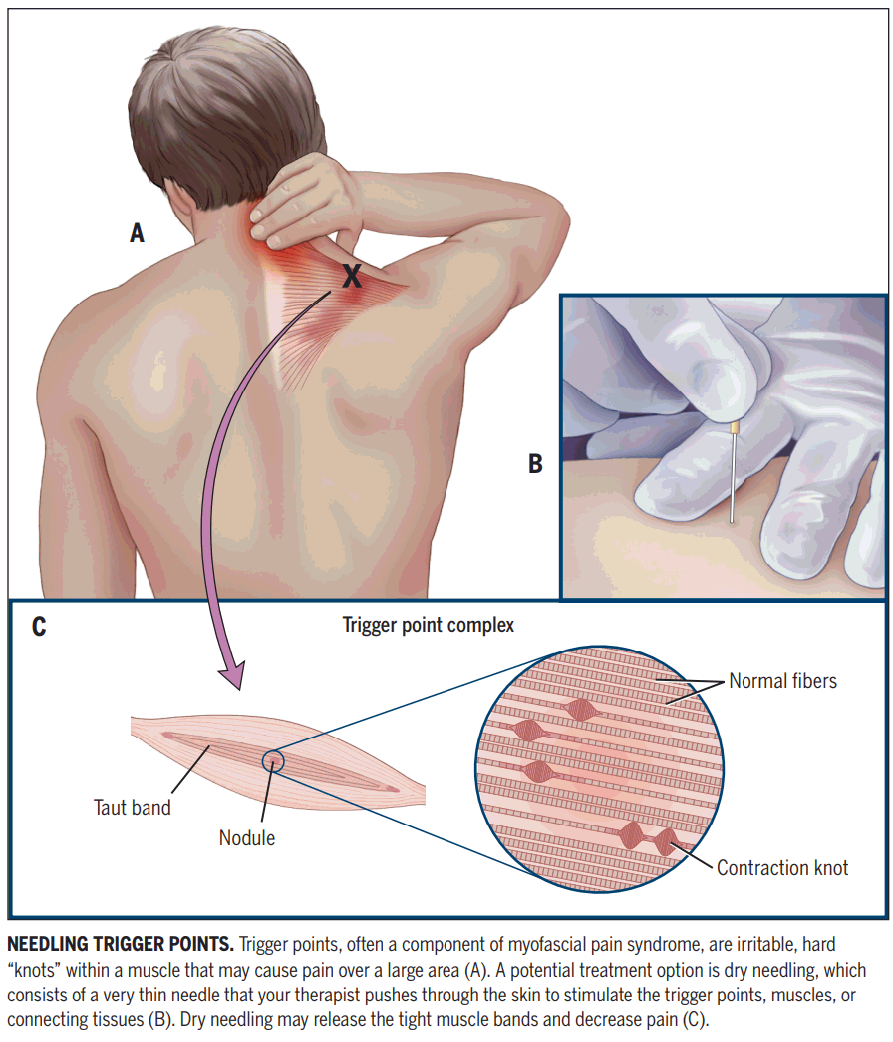
Trigger points and their characteristic patterns of referred pain can be treated by direct needling at the trigger point. This concept is also used in musculo-skeletal medicine with trigger points being treated by manipulative techniques.
Trigger points in the muscles of the head and neck produce certain patterns of head and neck pain.
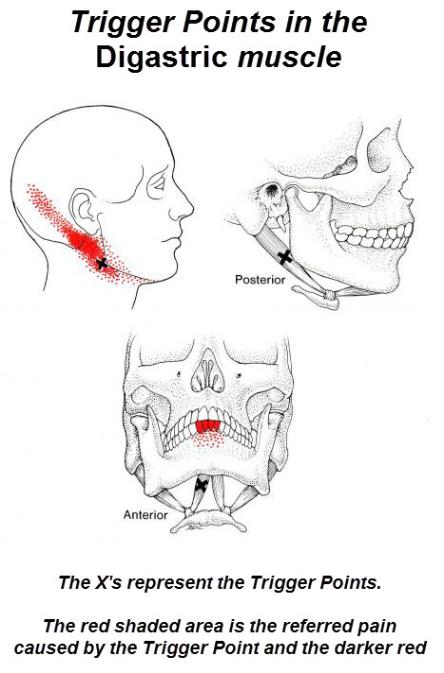
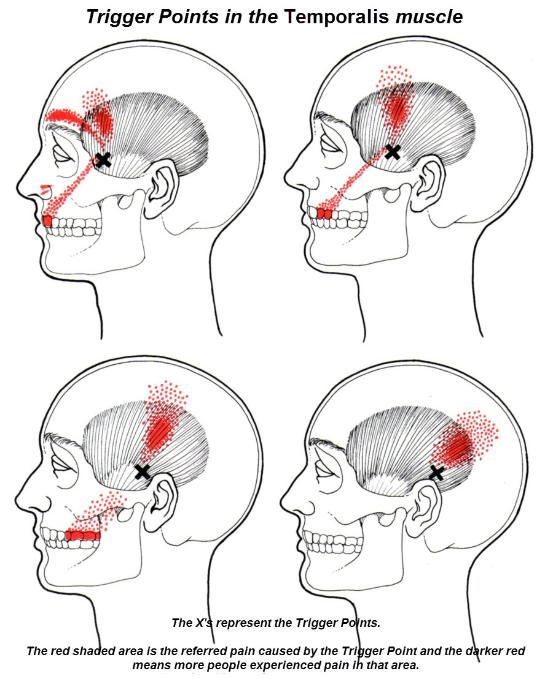

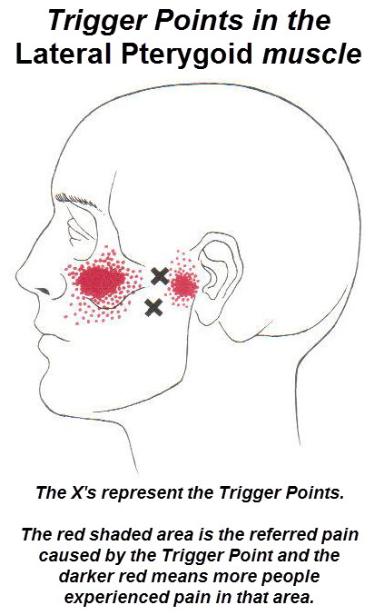

What happens during a treatment?
Typically, between 5 – 15 trigger points are needled during an acupuncture session.
The needles are usually left in place for 10 – 20 minutes, although some practitioners needle for only a few seconds or a small electrical current (electro-acupuncture).
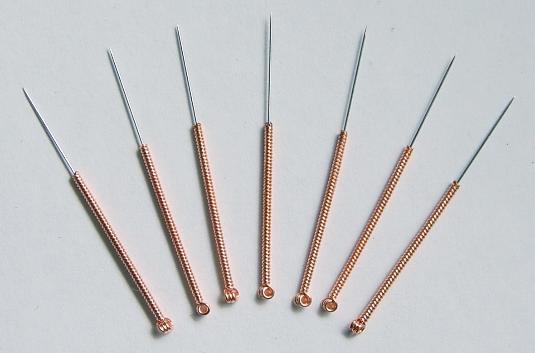
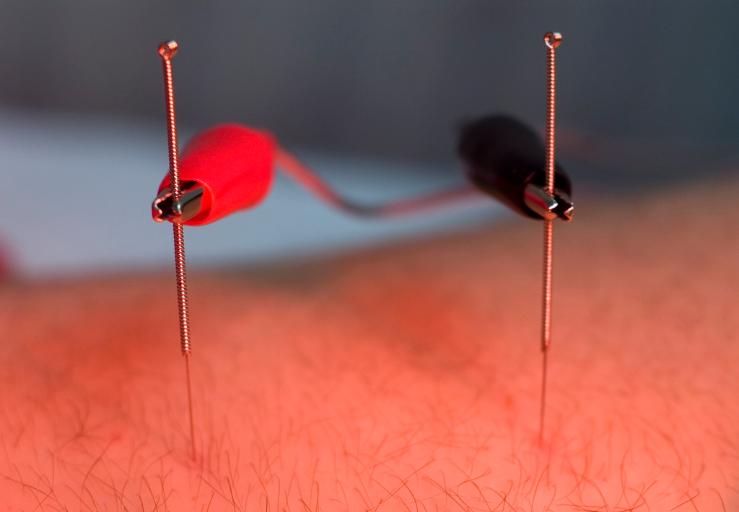
Some acupuncturists attempt to produce a sensation called “de Qi” – a sense of heaviness, soreness or numbness, at the point of needling. This is said to be a sign that an acupuncture point has been correctly stimulated. Many patients say that they find acupuncture a relaxing or sedating experience.
A typical course of acupuncture treatment for a chronic condition would be 4 – 6 sessions over a three month period. This might be followed by “top up” treatments every 2 – 6 months.
Is acupuncture safe?
The needles used are individually sterilised and disposable. They are used on one patient only before being discarded. Side effects are rare. The most common are listed here:
Bleeding and Bruising. A little bleeding can occur when the needles are removed. Occasionally, a bruise may form.
Sickness. This may be mild either during or after any of the sessions.
Dizziness and fainting. This is a very rare and usually happens during the treatment. Stopping the treatment and removing the needles reverses the feeling. Future treatment may be given with fewer needles or over a reduced period of time.
Drowsiness. Patients report they have felt sleepy or tired during or after treatment. This is normal and may affect the ability to drive or operate machinery. If this is a problem, please ensure you are escorted to the clinic for your treatment.
Increase in pain. Many patients have reported an increase in the level of their pain following a treatment. This can be a positive sign but if the level of pain continues to increase treatment may be stopped.
Infection. Every effort is made to prevent infection occurring. The needles are disposed of immediately after a single use.
Air in the Lung (Pneumothorax). When acupuncture needles are placed in the chest or the top of the shoulders, there is an extremely small chance that lungs underneath may be punctured. All the practitioners have been trained to avoid this happening. However, any new shortage of breath following acupuncture to this area should always be reported to the A&E at the hospital. Please tell them that you have had acupuncture and, if possible, take this information leaflet with you. A chest X-ray may be taken.
The rarer side effects include:
- Mild pain at the needle site
- Stuck or bent needle
- Headache
- Allergy or infection
- Pain not at needle site
What can I expect to feel?
Reaction to the insertion of the needle can be divided into two groups: Local and General.
Local effects:
As the needles are so fine there is only the slightest prick as the needle pierces the skin. Afterwards, it is possible to have a variety of sensations from nothing at all to a sensation of heaviness; a tingling sensation like pins and needles or the sensation approaching that of a local anaesthetic.
If the needle is advanced further then there may be a duller pain or heaviness of a limb which may last for some time afterwards. It is possible that odd sensations may be experienced in areas distant to the spot being needled.
General effects:
These are variable and tend to happen in more sensitive individuals. Some patients experience a lightness of mind and body, a relaxation which approaches effects gained by 1 – 2 drinks of alcohol and is usually pleasant. Others may simply feel that their general well-being is improved. Still others may feel no difference in their general state. It is possible for a few susceptible individuals to feel faint but this is usually short-lived and subsides when the needle is removed.
Will acupuncture treatment help me?
75% of all people will get some benefit from acupuncture treatment. The facial pain may totally resolve or be much improved.
Unfortunately, about 25% of patients do not seem to respond to acupuncture and we can never guarantee results.
